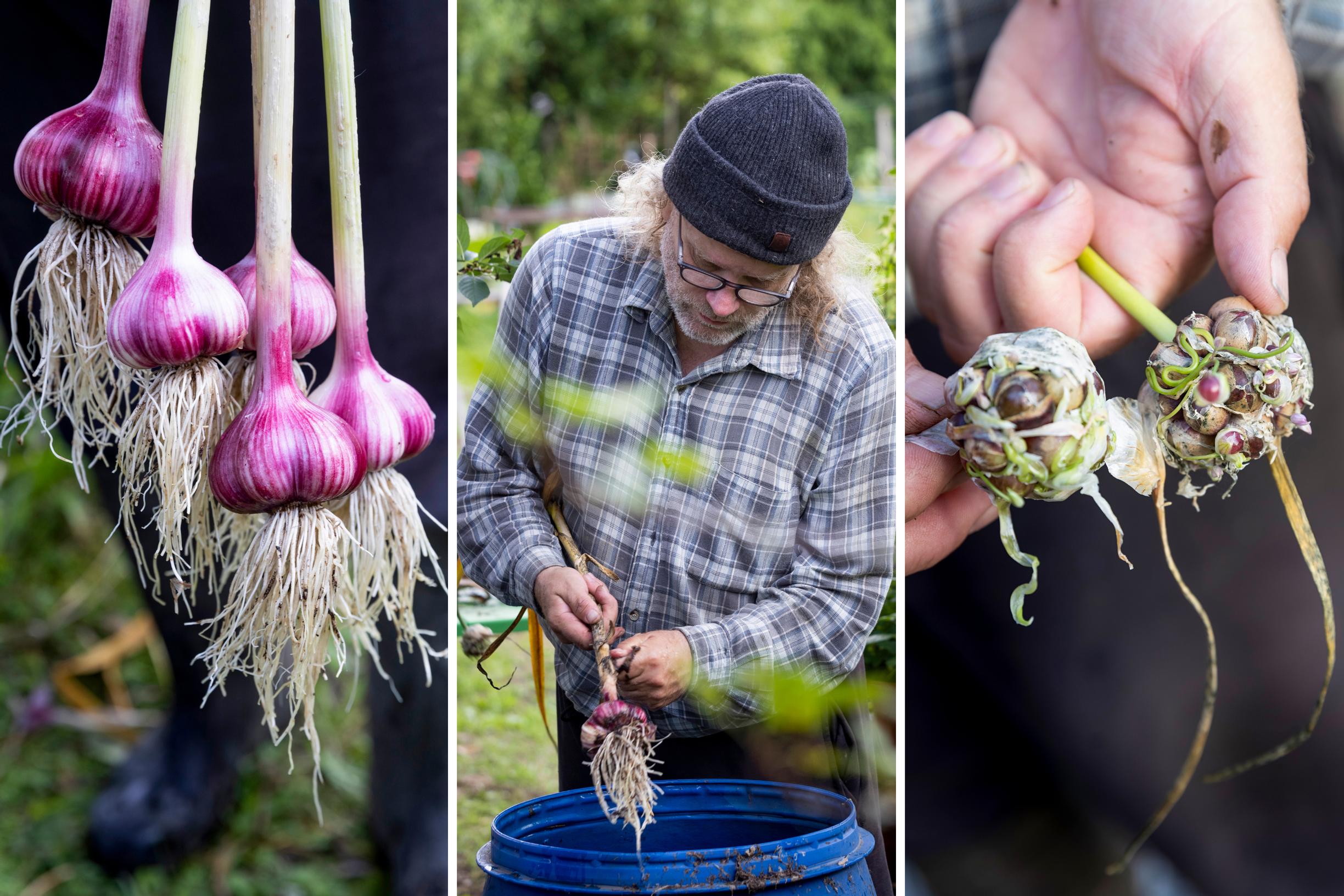
The Finnish pastor with one of the world’s largest garlic collections—“I talk to them and play them music”
Torsten Sandberg has 120 different garlic varieties growing in his fields, some of which he developed himself. If anyone knows the secrets of a bountiful and flavorful harvest, it’s Torsten. At the end of this article, he also reveals his favorite varieties.
When he drew the bow to its full draw and followed the arrowhead with his eyes, his right hand began to hurt. For Torsten Sandberg, it was time to face reality: his hand could no longer handle archery.
“After I stopped that hobby, I suddenly had time for other pursuits. Back then, I had no idea what garlic could mean to someone,” Torsten says.
It all began in 2013, when Torsten purchased a few garlic cloves from the local association for useful and edible plants. At the time, he was serving as vicar in Aura, Finland and planted them in the rectory garden alongside other edible plants.
That first year, Torsten harvested only a modest bundle of garlic. He hung it to dry on the hallway coat rack and paid little attention to the white heads dangling upside down.
“But I’m the collecting type, and garlic just carried me away. Maybe there was something destined about it,” he says.
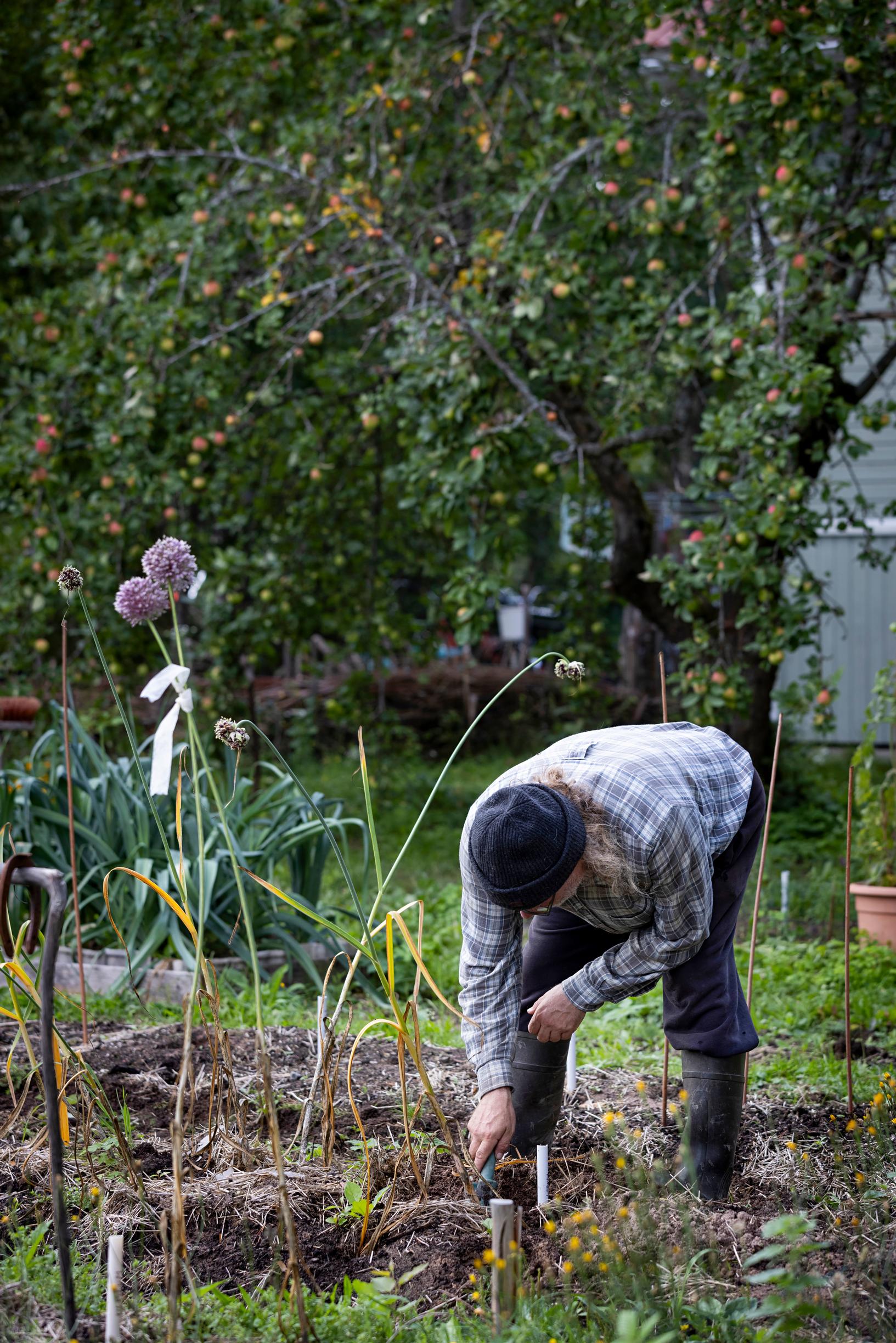
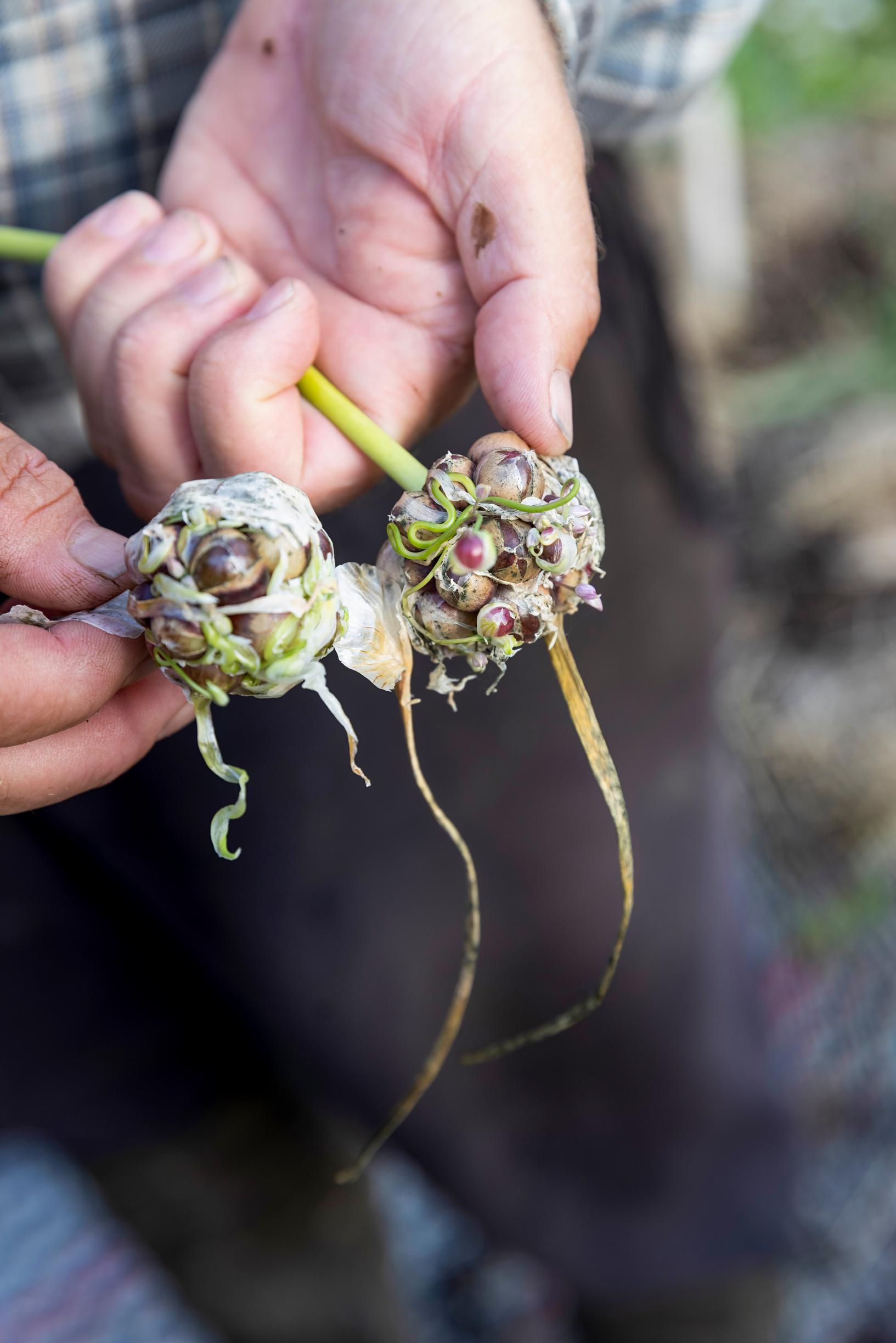
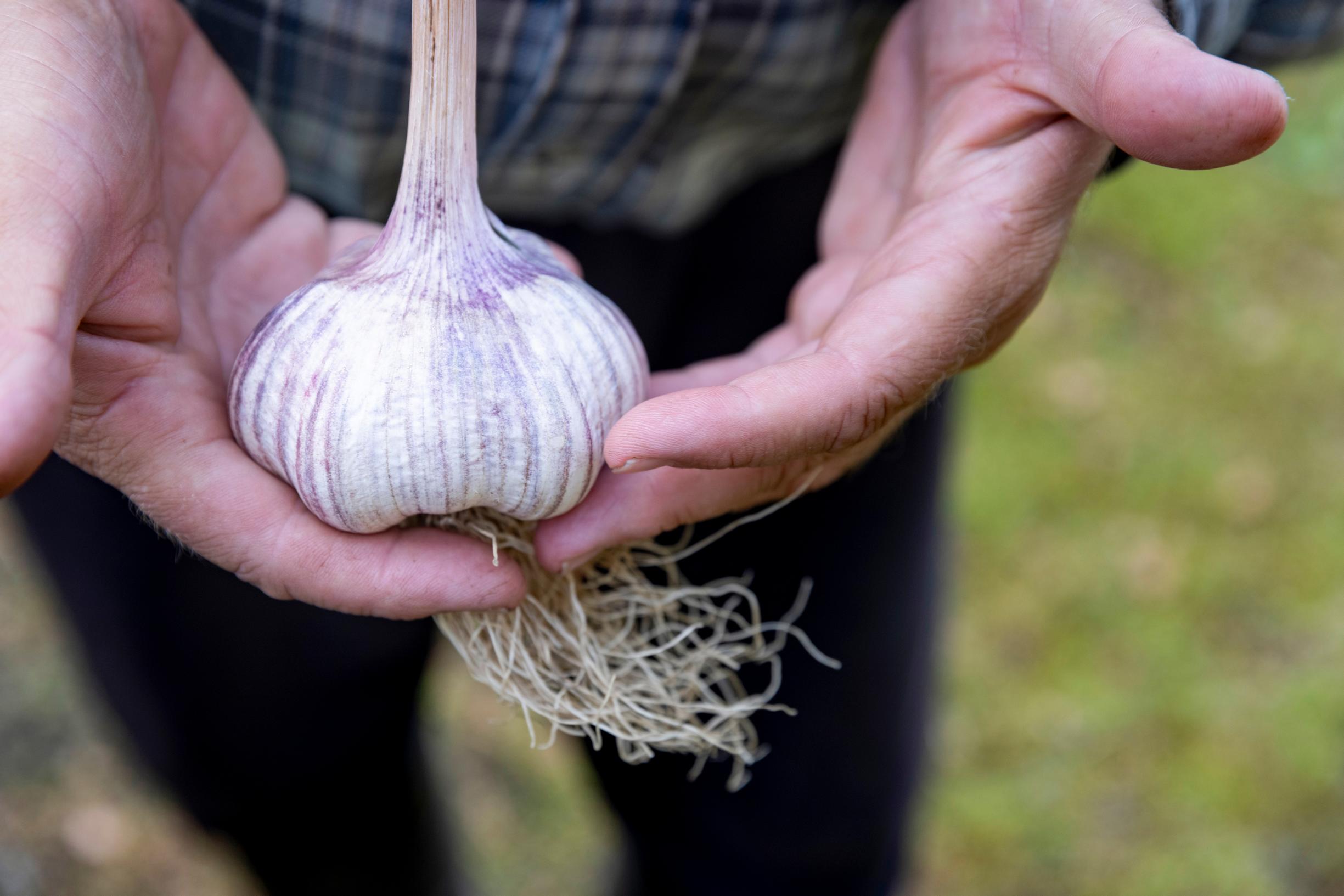
Within a couple of years, Torsten managed to collect nearly every garlic variety sold in Finland, plus those he got from Finnish enthusiasts. By then, 27 different varieties were already growing in the rectory’s garden plots.
As well as gathering varieties, Torsten also sought out key reference books, finding major inspiration in American organic farmer Ron L. Engeland Growing Great Garlic: The Definitive Guide for Organic Gardeners and Small Farmers.
“In his book, Engeland clearly and practically explains how to cultivate garlic. I learned much of what I know from him,” Torsten says.
Following Engeland’s lead, Torsten calls his approach organic farming, which he sees as very different from standard organic cultivation.
“I don’t use any industrial products or fertilizers, and I avoid using machinery whenever I can.”
(Story continues after the info box)
Torsten’s tips for growing garlic
1. Start early
Make your bed by placing cardboard or newspaper on the bottom and covering it with horse or chicken manure plus compost. If possible, prepare the bed a year before planting the cloves, allowing time for perennial weeds to die off. You can also grow nitrogen-fixing plants, such as clover and peas, to enrich and fertilize the soil before adding garlic.
2. Make a raised bed
Before planting, shape the soil into a raised bed about 20 cm (8 in) high. Mix sand and quality soil, like leaf mold or well-aged compost, into the manure-and-compost mixture. Make sure the soil layer goes 40 cm (16 in) below the surface, for a total depth of about 60 cm (24 in), giving the garlic roots ample space to develop.
3. Use quality cloves
Plant medium-sized, healthy seed cloves, which you can source directly from trustworthy domestic growers and enthusiasts.
4. Plant before the frosts
Start planting in the fall, well before frost sets in, so the garlic can root and grow vigorously once spring arrives. If planted too late, the cloves produce a small shoot first, then roots. Torsten plants his cloves between October 10 and All Saints’ Day.
5. Mulch with straw
Finally, spread a layer of chopped straw to mulch the bed. It helps keep the soil from freezing too quickly before winter, letting the cloves continue rooting and start sprouting. Good mulch also protects the shoots. Come spring, they can tolerate down to about –10°C (14°F), depending on the variety.
The garlic harvest was recently gathered in when we visit Torsten’s current home garden in central Southwest Finland this August. It was quite a task, with nearly 1,600 plants harvested.
Among the handsome bulbs pulled from the ground is ‘Havran,’ now resting on a rod secured to the ceiling of Torsten’s partner’s pony stable.
“I think ‘Havran’ is one of the five best garlic varieties in the world. Its flavor features layered notes of anise, eucalyptus, and heat.”
Torsten obtained this variety—and about 40 others—from a well-known Czech “ultra-organic” gardener Martin Smetana. Its first year growing was strong, but then it shrank in size. According to Torsten, that’s typical for southern varieties.
“It can take five or six years for plants to adapt to a completely new location and really flourish,” he says.
Since getting accustomed, ‘Havran’ has grown robustly. Torsten gently strokes the thick roots emerging beneath the bulb. You won’t find roots like these in a grocery store, as machine harvesting often bruises garlic bulbs.
“You can’t just yank garlic out of the ground. Imagine how it feels to be pulled up by your hair! Garlic needs careful lifting, then time to dry.”
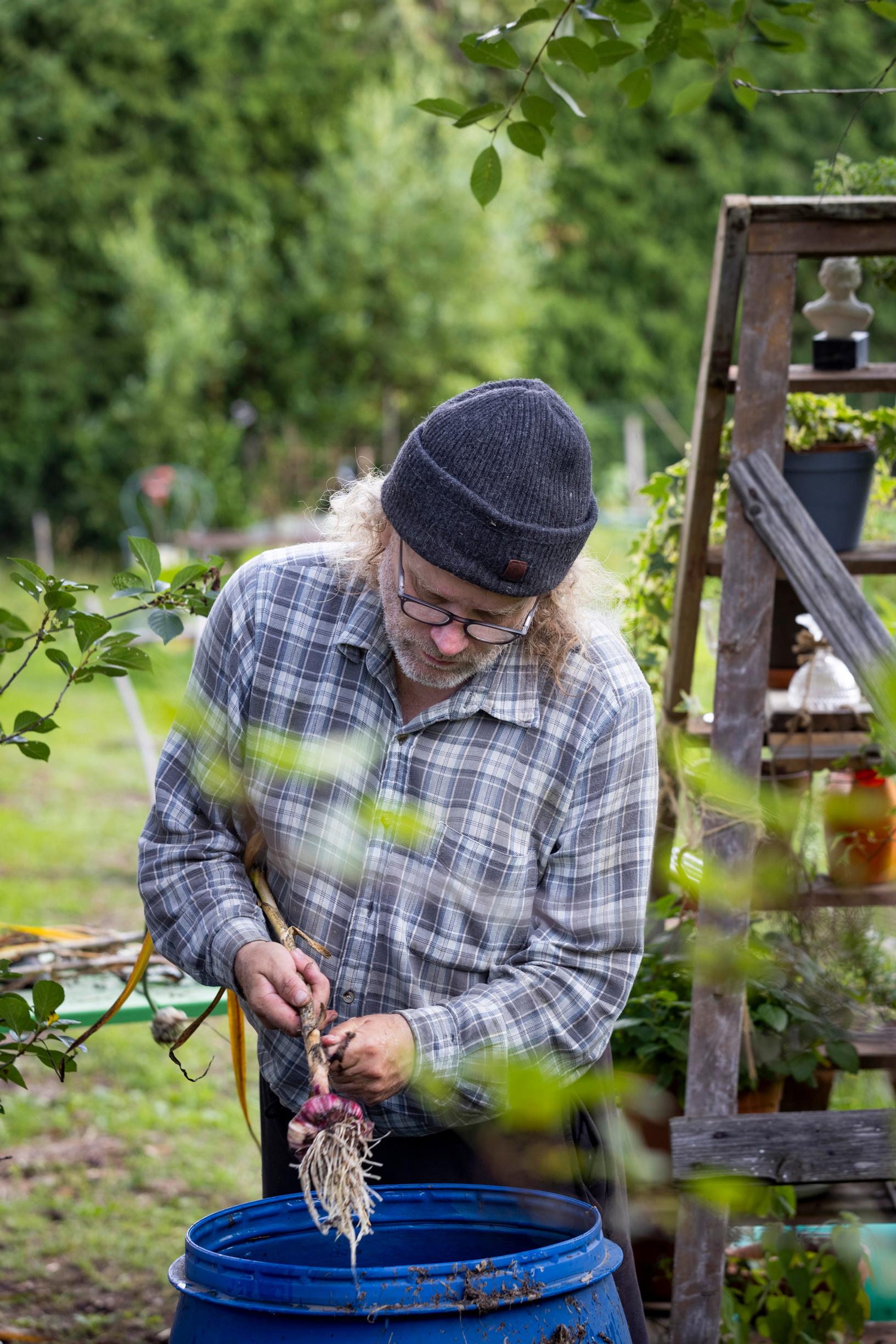
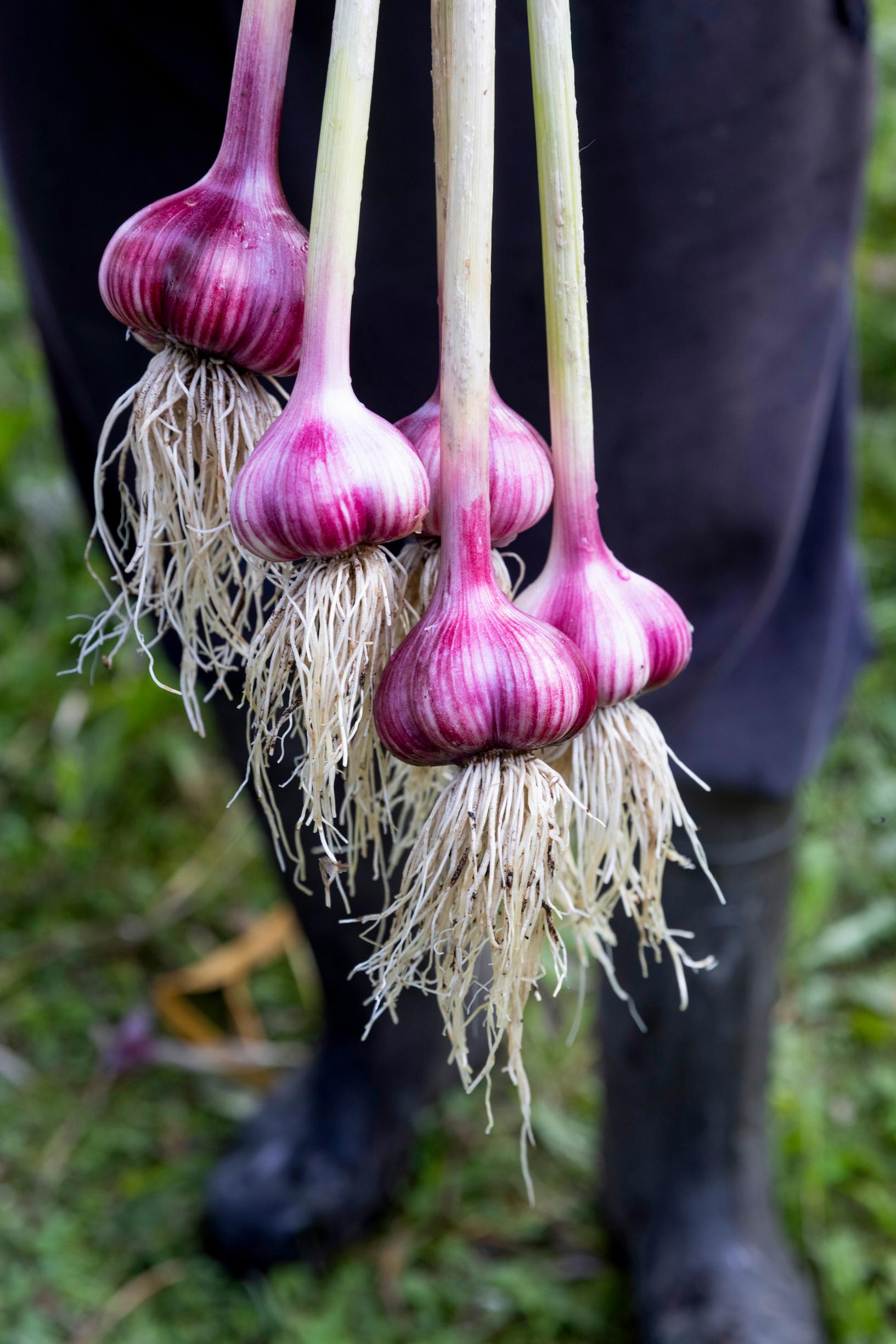
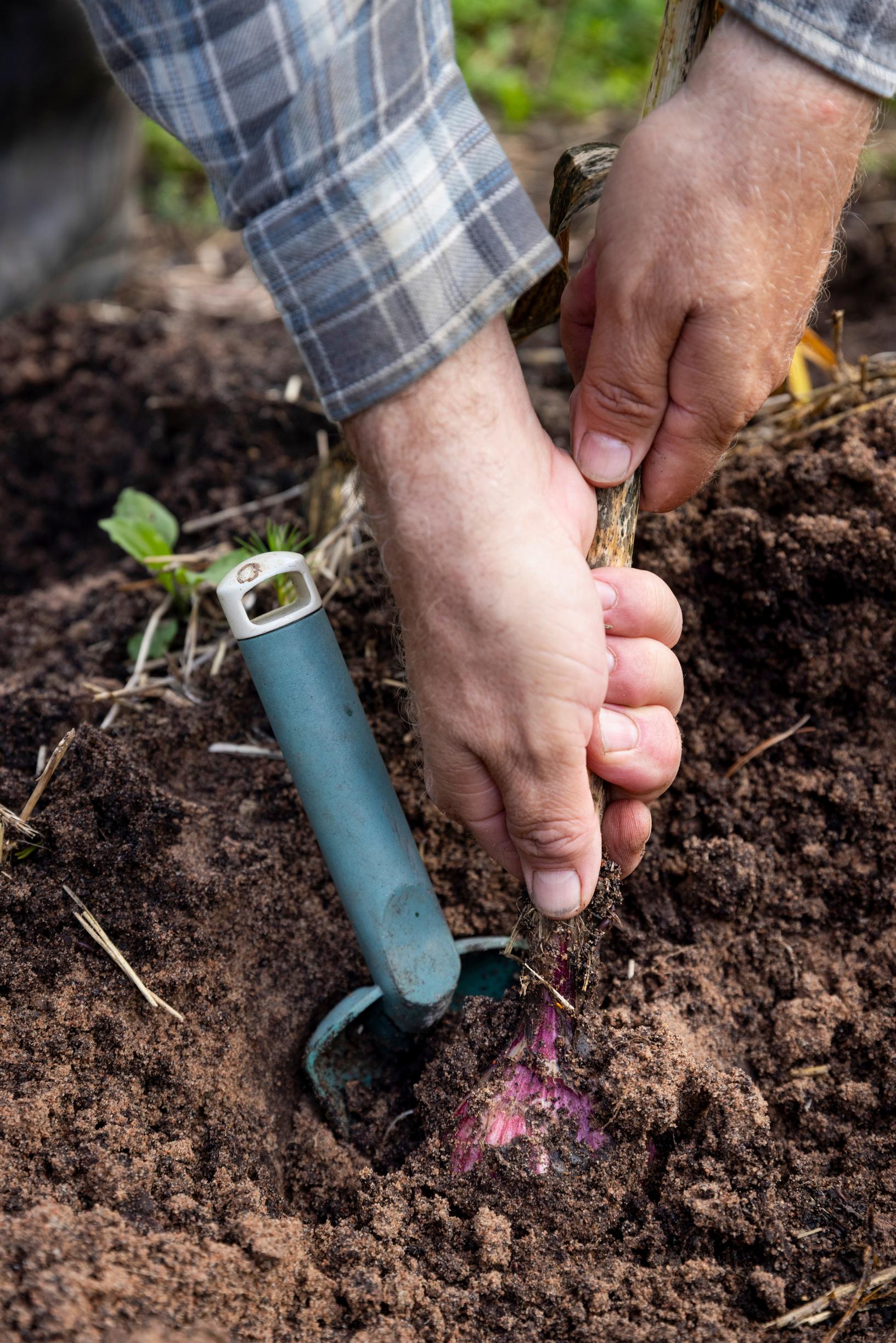
But how do you know when it’s time to pull garlic from the ground?
“People often say to harvest when the lowest leaves turn brown, but that can mean picking them too early. A better time is when the plant still has five or six green leaves from the top down. By then, the garlic forms a thick, layered skin.”
Torsten dries his garlic in the pony stable and an unheated yard sauna for around two months. Often, they keep growing a bit at the start of this slow drying phase, and in Torsten’s experience, the flavor only deepens.
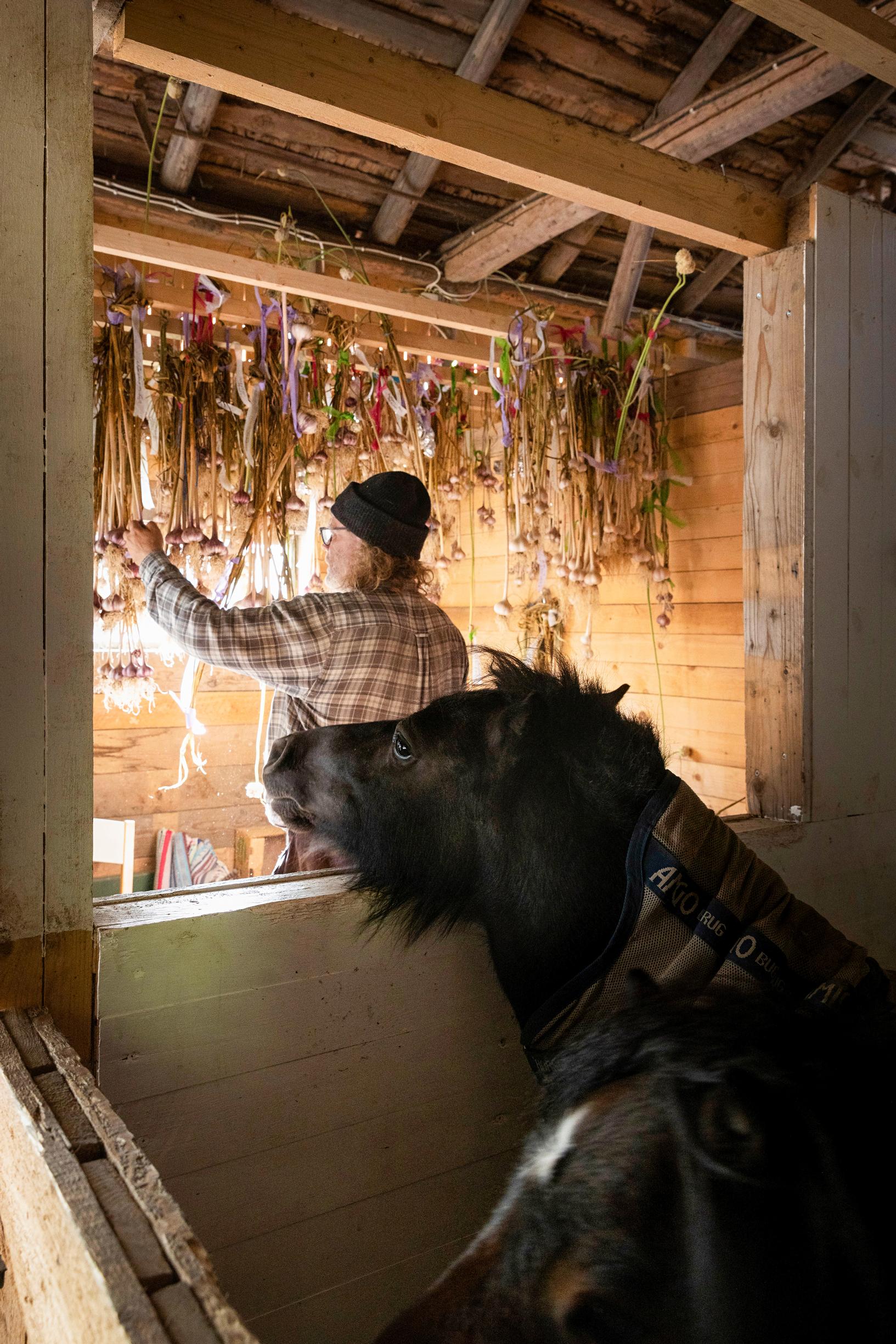
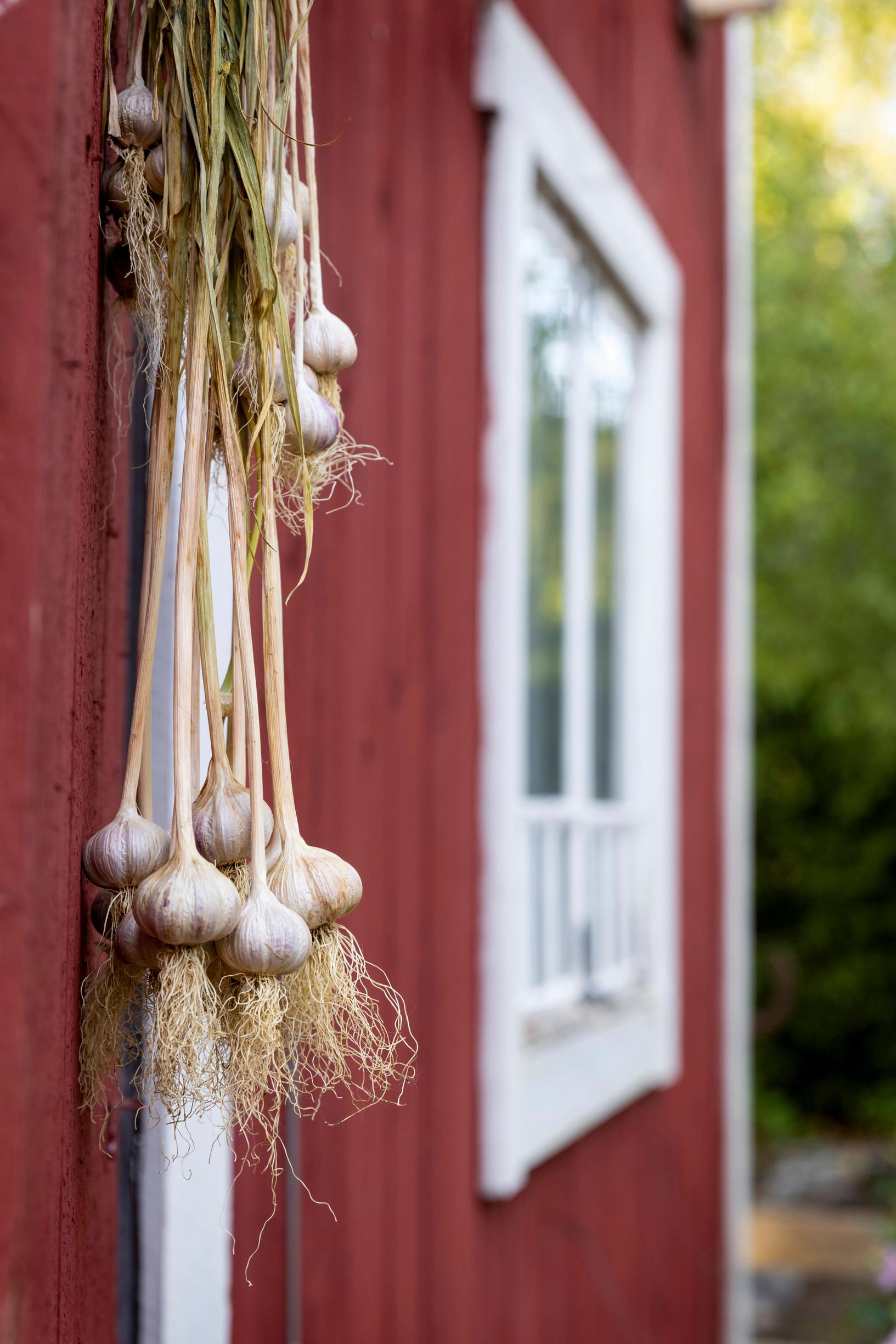
Torsten’s collection now encompasses 120 different varieties, most of which he obtained by trading with Finnish and European hobbyists. At one point, he had 150, but some were lost to the mild, wet winter of 2019–2020. Meanwhile, various new varieties have appeared under his care through mutations.
“Eight of my varieties have made their way to Europe. A Dutch gardening business took them on for further growth and propagation. I won’t say more just yet,” Torsten says.
He considers his collection Finland’s largest and suspects it might be among the biggest private garlic collections worldwide.
“I can recognize each variety by sight. I talk to them out on the plot, and play music for them when they’re drying indoors,” he says.
Torsten aims to expand his collection to around 200 varieties and hopes to spark others’ interest in the captivating world of garlic. Two years ago, he founded the Härkätien kynsilaukka—De Re Allii Sativi association with some fellow garlic enthusiasts to share knowledge about garlic and how to grow it.
“People should take more responsibility for their own food production. I believe garlic will become even more vital in the future, since it’s scientifically proven to support health,” he says.
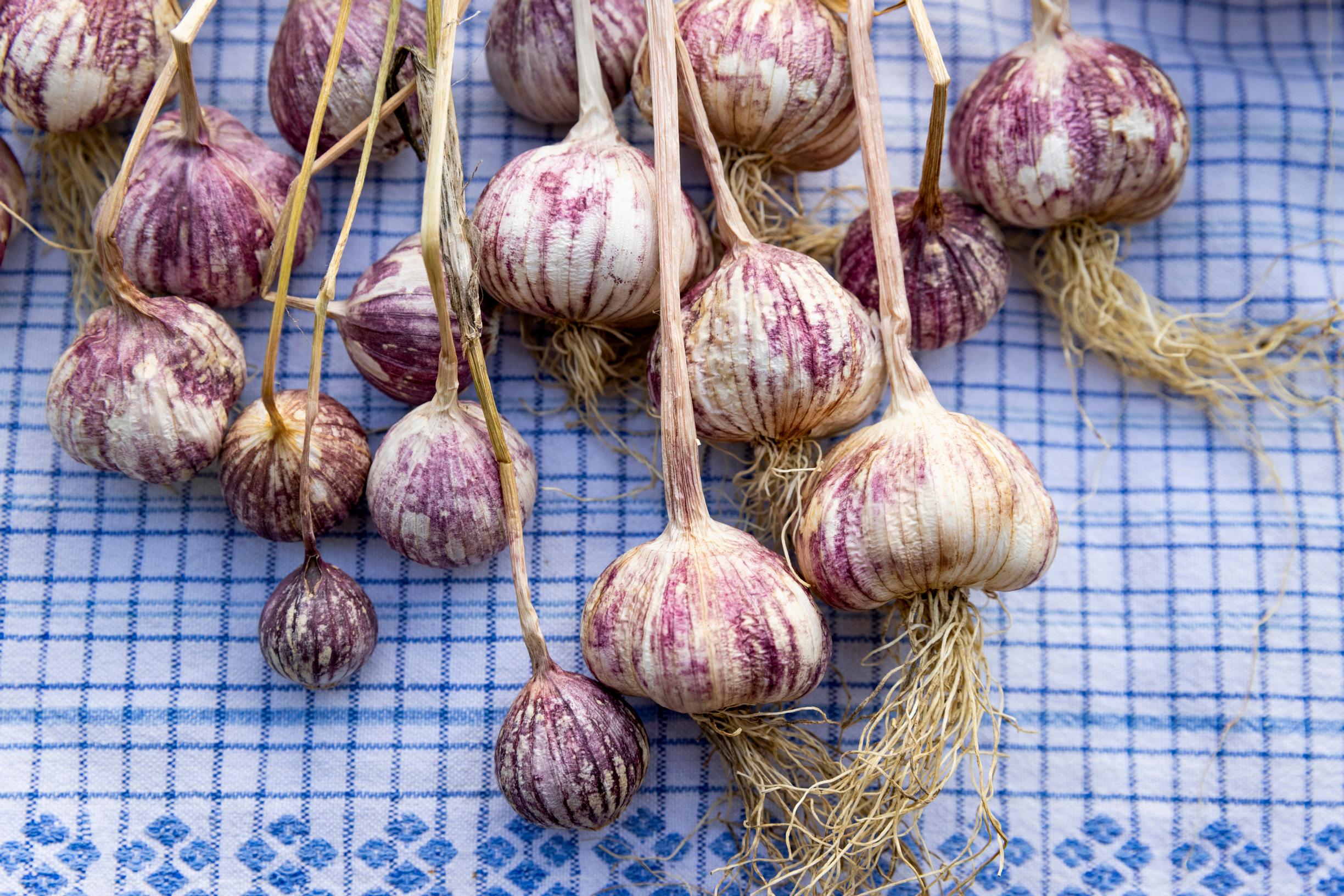
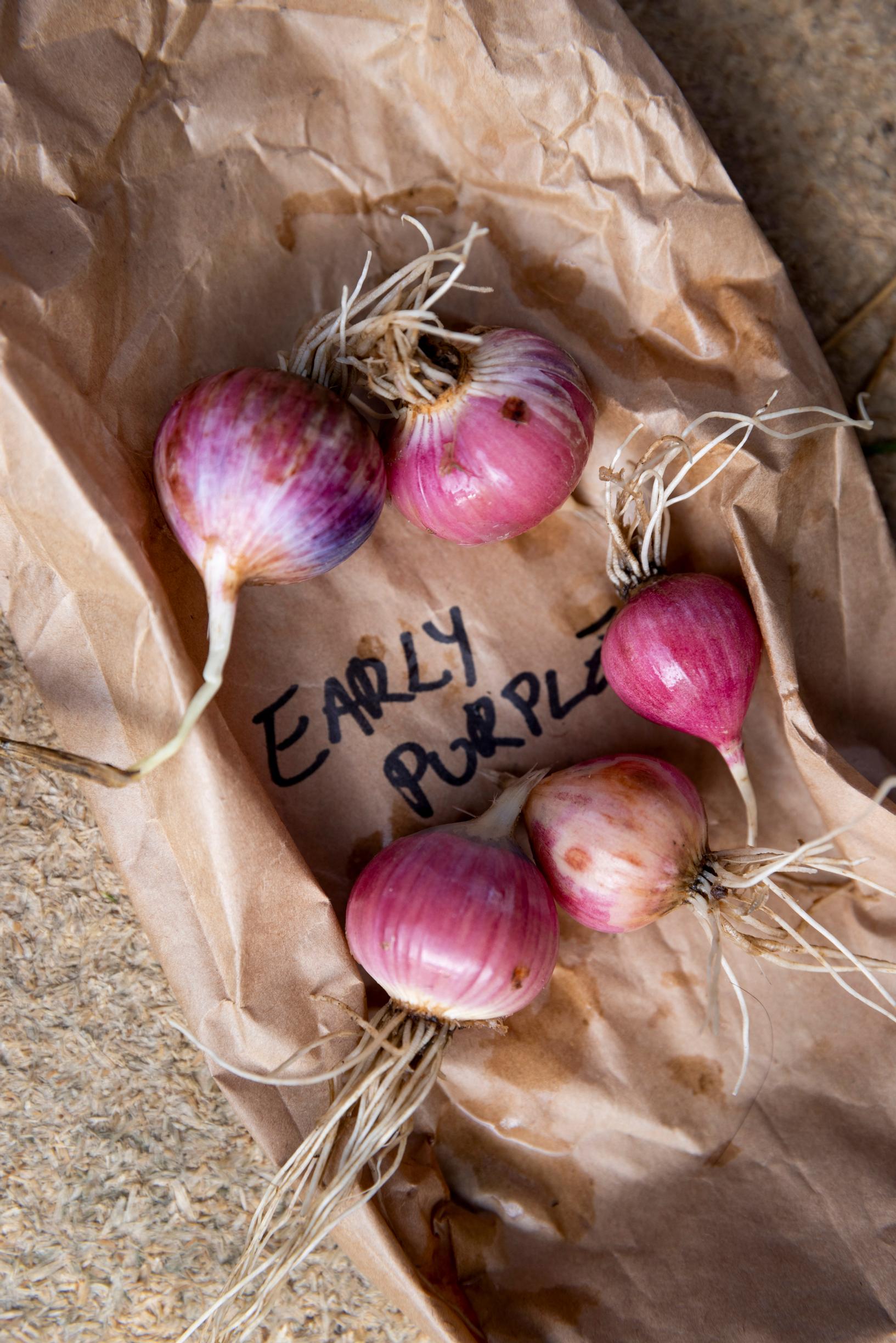
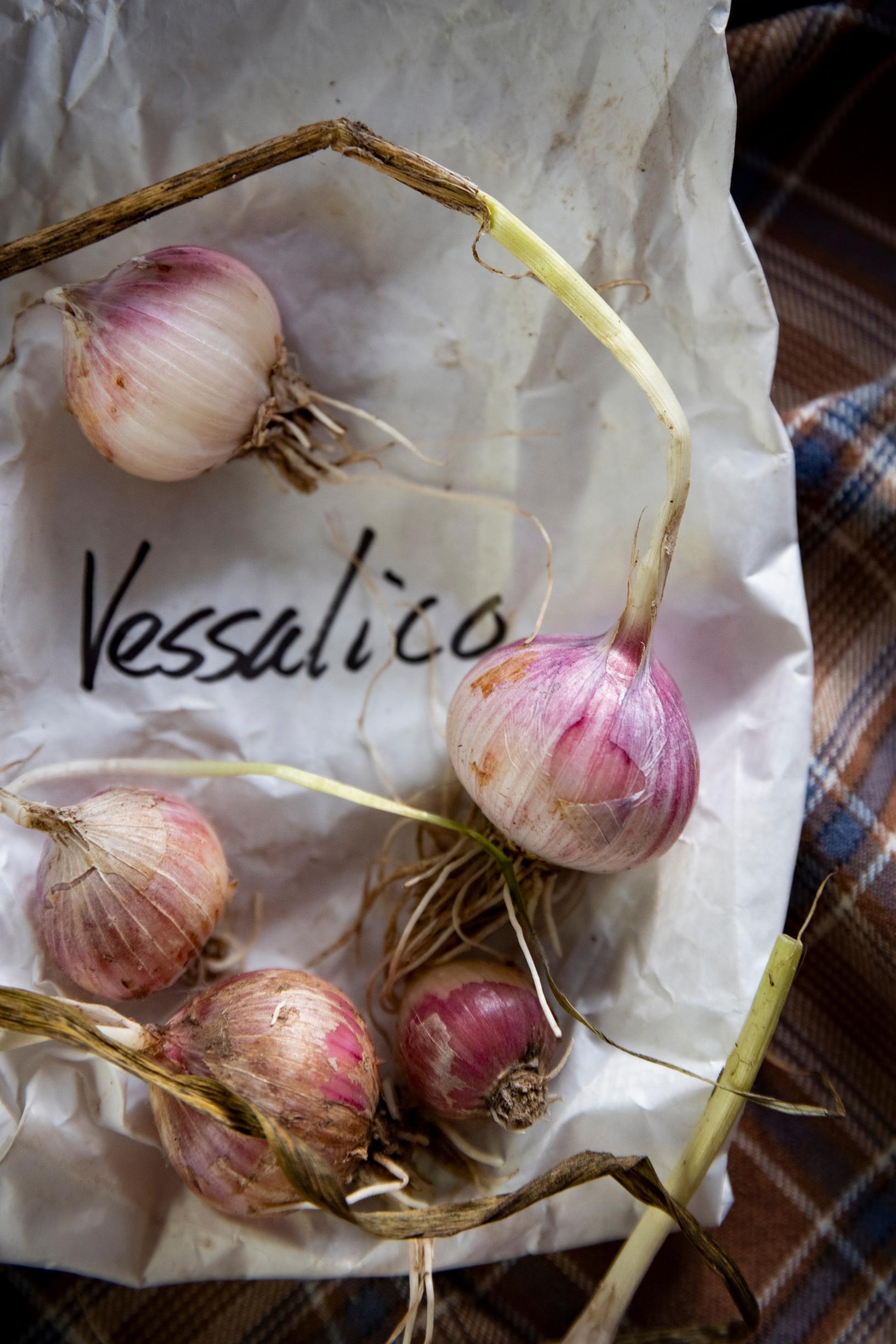
Torsten’s favorite varieties
Siberian
A reliable, easy-to-grow variety. Versatile, with cloves that store well for extended periods. Its high allicin content brings real heat.
Bjetin
Bred and renamed by the Czech Jan Kozak, this variety has a strong, nuanced, herbal taste. Its flower stalks are also extremely tasty, like spicy sugar snap peas.
Havran
Identical to the Russian Petrovski and Estonian Hummuli, but Havran is Kozak’s virus-free line and performs the best. Its flavor brings anise, eucalyptus, celeriac, and the taste of freshly pulled carrots.
Rosso di Sulmona
A favorite among Italian garlic fans, with an unmistakable mix of pungency and sweetness. One clove often does the job in cooking. It stays in prime condition for up to a year.
Vessalico
A gift from Italy’s Liguria for garlic enthusiasts. It needs longer to adjust to Finnish conditions, but rewards patient growers. Its flavor is mild and refined, and you might pick up a hint of celery.
Red Estik
Part of the large hardneck group but does not grow overly big like Russian Giant. Easy to propagate and renew from bulbils, and it’s low-maintenance.
Cielavas
An early-sprouting variety that typically matures by early July in southern Finland. It’s ready to eat by early August following a short drying period. Its flavor is mild. Originating from an old Latvian strain, Torsten named it “Cielavas,” meaning wagtail in Latvian.
Early Purple
Named by the English Colin Boswell, this variety is usually ready by early July. Its flavor is fairly mild and vegetal, with a lingering spiciness. Best enjoyed before Michaelmas (October 5). It can also be used the way you’d use fresh onion greens.
Burgundi
A challenge to adapt to Finnish conditions, but wonderful for a fine aioli. In a hot summer, you may detect a whisper of Carmolis oil. A small clove can rival a lozenge for soothing winter throats.
Kolkjan purppura
A variety Torsten found in 2016 in the Estonian village of Kolkja on Lake Peipus’s western shore, originally from Russia. It grows big and sturdy, sometimes unveiling a blaze of color on its cloves. It has adapted well even as far north as Keminmaa. Best suited to stovetop sautéing.
The Glory of Sandberg
A variety Torsten bred himself, originating from softneck Messidor mutations. It grows vigorously, with striking, upright leaves and a deep green hue. Its large, uniform cloves boast an extremely high allicin content.


